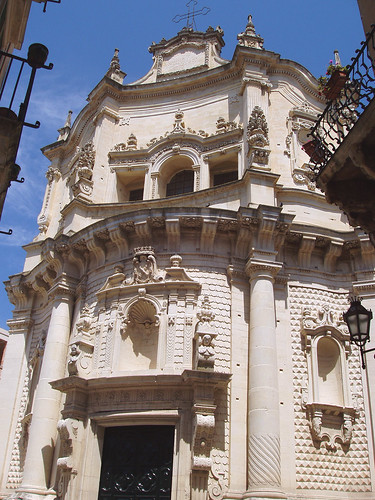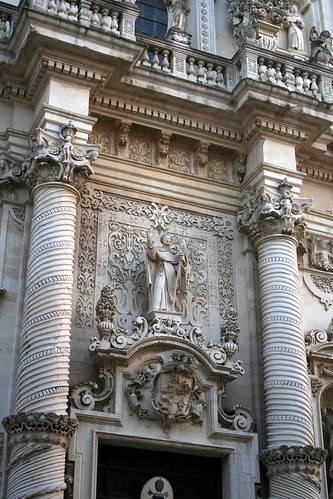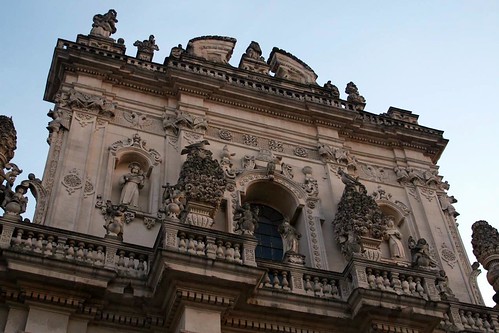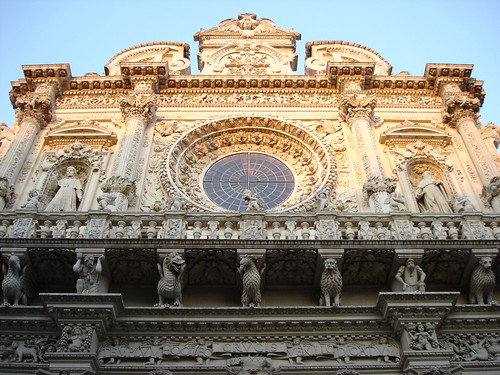Tuesday, June 12
Forgotten Architectural Styles V: Lecce, the Florence of Apulia
"Lecce, the provincial capital of Apulia, is the most beautiful and architecturally distinctive city on the south Italian mainland. [...] Despite its remoteness in the heel of the Iyalian boot, Lecce and its environs was a prosperous center of agriculture and trade with the East. Culturally, it remained more or less independent of both Naples and Spain, and one searches in vain for any easy explanation of its idiosyncratic architectural personality. [...]
"The Sedile [1592, Giuseppe Ricardi] embodies three characteristics common to the city's architecture: the unorthodox handling of the classical orders; the adoption of outdated elements such as the Gothic pointed arch; and the love of sculptural ornament. Here, the treatment of the corner pilasters is the building's most eccentric and memorable feature. Gouged out to reveal round columns within, these pilasters are as bizarre a redundant a combination of structural elements as can be found anywhere. The pilasters' abbreviated Corinthian capitals are a final 'mannerist' touch. [...] It is also one of the first Baroque buildings in Italy, if by the term Baroque we mean spirited and self-assured."

(Image source)
[On the church of San Matteo, Achille Carducci, c. 1644-1712]
"The facade [...] is more dramatic [than the church's interior]. It is more complex spatially and uses a more diverse repertory of architectural devices. Completed in 1700, its robust elevation is based on the Baroque tradition of curved planes and three-dimensional structural members. [...] The upper story of S. Matteo reverses the curvature of the one below. [...] Whatever its sources, S, Matteo is an amazingly free and unselfconscious structure whose temperament is purely Leccese. This is especially obvious in the surface decoration. Nowhere bute in this isolated coastal province could one find an entrance bay covered in fish scales, or cornice brackets covered with a dense carpet of tiny suckers. [...]

(Image source)
[On Giuseppe Zimbalo's Church of the Rosary, shown below, 1691-1728]
"...The columns display an unusual motif which is the architec's virtual trademark. A thick foliate band that marks the juncture of the cabling and fluting. Above the columns on the second story rest vases carved with massive fruit bushels and plump birds. Elsewhere on the densely-worked facade are embellishments that seem to spring from a different, more delicate sensibility. Over the doorway is a squarish relief carved in flat arabesque patterns that recall Islamic art."

(Image source)


(Image source)
Other landmarks of Lecce are shown below, such as the Seminary, the Cathedral, the Piazza del Duomo, and various interior views and streetscapes:





(Image source)

(Image source)

(Image source)
These, and many other similar shots, can be found at Flickr.












